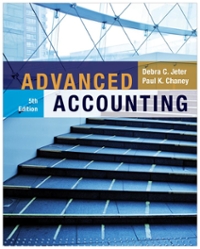
need some help with understanding and solving this question:
For the last batch of the year, Opaskwayak processed 1,000,000 pre-purification litres with the following direct labour hours and machine hours: Department Direct labour hours Machine hours Transportation 50 221 Purification 28 75 Carbonation 95 1 92 Fruit 100 167 Bottling 85 20 Processing this final batch took 2,500 kilograms of cranberries, of which 2,458 kilograms remained after sorting. This produced 4,916 litres ofjuice. Bottling costs are allocated on the basis of volume processed. Assume that $24,520 in direct materials is added in Carbonation, $2,675 in Fruit, and $1,090 in Bottling. Required: a) Compute each department's manufacturing overhead rate, assuming that Opaskwayak uses a normal department rate based on the planned manufacturing overhead. (2.5 marks) b) Calculate the total joint costs for the last batch of the year using the manufacturing overhead rates calculated in part (a). (4 marks) c) Calculate the cost of bottling and carbonating the water and adding the fruit syrup for the last batch of the year based on the manufacturing overhead rates calculated in part (a). (4.5 marks) d) Determine how much of each product was produced in the final batch based on the current production breakdown. (1 mark) e) Using the net realizable value method and the planned amounts, as well as the amounts calculated in parts (0) and (d), allocate the joint costs of Transportation and Purification to the nal batch produced. (7.5 marks) f) Using the joint costs calculated in question 2e, calculate the cost of the final batch of cranberry-flavoured carbonated water using activity-based costing for the costs in the Fruit department. (6.5 marks) Opaskwayak Inc. bottles pure spring water from lakes in northern Manitoba. The lakes are on First Nations property, and the band is the majority shareholder in the company. The only cost for the water is the cost of transportation and purification. The company is very careful not to overtax the water systems when it takes water. It also ensures sustainability for the land. Opaskwayak currently produces three different products from the spring water: still water, carbonated water, and a cranberry-flavoured carbonated version. The process for creating the various products is as follows: All products start with the piping of the water to the bottling plant. At the plant, the water undergoes a thorough distillation process. 1% of the volume is lost in the distillation process. For still water, the water is bottled at this point. For carbonated water, the water goes from this split-off point to the Carbonation department. After carbonation, a percentage of the product is bottled, and the remainder is moved to the Fruit department. In the Fruit department, the cranberries are sorted, juiced, and boiled into a syrup. The syrup is added to the carbonated water, and the final product is bottled. The following information was reported for the most recent period: Department Transportation Purification Carbonation Fruit Bottling Direct materials $1,029,500 $320,760 $130,680 Direct labour $87,500 $75,750 $145,000 $180,000 $218,400 Planned manufacturing overhead $1,657,250 $560,000 $675,850 $356,000 $6,800,000 Actual manufacturing overhead $1,754,235 $485,000 $669,880 $376,128 $6,875,000 Planned machine hours 26,200 8,800 20,000 20,000 2,496 Actual machine hours 26,208 8,850 19,500 20,100 2,496 Planned direct labour hours 5,250 5,050 10,000 12,000 10,000 Actual direct labour hours 5,650 5,000 10,050 11,990 12,000 Volume in litres 120,000,000 118,800,000 41,580,000 5,940,000 118,800,000 In the current period the following production occurred: . 60% of the purified volume was bottled as still water. - 35% of the purified volume was bottled as carbonated water, and the remainder was bottled as cranberry-flavoured carbonated water. The price of the products is as follows: Still water $0.20 per litre Carbonated water $0.23 per litre Cranberry-flavoured carbonated water $0.50 per litre Direct labour hours is the cost driver in the Transportation and Purification departments. All other departments are driven by machine hours. In the Fruit department, the accountant has analyzed the activities and has arrived at the following: Activity Cost Driver Volume Cost per unit Washing $ 24,175 Kg of fruit 3,000,000 $00081 Sorting 115,000 Kg of fruit 3,000,000 0.0383 Juicing 116,150 Kg of fruit 2,950,000 0.0394 Boiling 100,675 Litres of juice 5,900,000 0.0171









